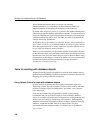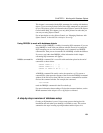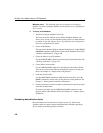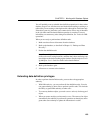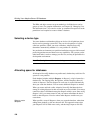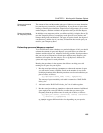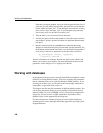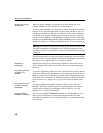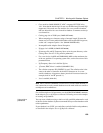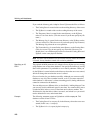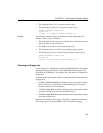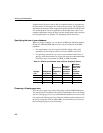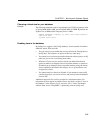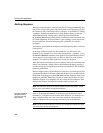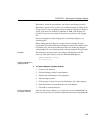
Working with databases
108
Locating and moving
database files
When you create a database, you specify its location. Before you do so,
consider whether you will ever need to move the database.
In order to move a database, it is crucial that you have all of the files you need,
that they be in a consistent state when you move them, and that no users are
connected to the database. Because it is difficult to achieve these conditions,
you should avoid copying a database unless absolutely necessary. Instead, if
you must move a database, use the
BACKUP command to make a full backup,
and then use the
RESTORE command with the RENAME option to restore the
backup. See Chapter 11, “Backup and Data Recovery” for more information.
Warning! The database file and the transaction log file must be located on the
same physical machine as the database server. Locating database files and
transaction log files on a network drive can lead to poor performance and data
corruption.
If your IQ requirements are large and complex enough that you need multiple
physical systems, consider using the Adaptive Server IQ Multiplex feature. See
the Adaptive Server IQ Multiplex User’s Guide for details.
Database file
compatibility
Adaptive Server IQ servers cannot manage databases created with versions
prior to Adaptive Server IQ 12.0; likewise, old servers cannot manage new
databases.
Using Sybase Central
to create an IQ
database
To create an IQ database in Sybase Central, click the Utilities folder in the left
panel, then double-click Create Database in the right panel to start the Create
Database Wizard. The Create Database Wizard leads you through the process.
If you need more information, see “Managing Databases with Sybase Central”
in the Introduction to Adaptive Server IQ, or see the Sybase Central online
help.
Using Sybase Central
to create a multiplex
IQ database
To create a multiplex IQ database in Sybase Central, you use the Create
Multiplex Wizard. Be sure that you have set up the multiplex environment
correctly before running Create Multiplex. See the Adaptive Server IQ
Multiplex User’s Guide for instructions.
Using the CREATE
DATABASE statement
You can use the CREATE DATABASE statement to create IQ databases. You
must specify the filename for Catalog Store and the
IQ PATH. All other
parameters are optional. If you use all of the defaults, your database has these
characteristics:



